
- Call +91 980 980 9779
- Email info@alleppeyhouseboats.com

To label Alappuzha (The Malayalam name for Alleppey) The ‘Venice of the East' might today appear a far-etched cliche of travelogue writers, but this quaint little town is certainly the Venice of India. Nowhere else will you find, spread out across the center of town, a unique crisscrossing network of canals on which thatched country boats punt along leisurely. The proximity of lakes adds to the Venetian ambience.
But when Raja Kesavadasan, the Dewan of Travancore, founded the town in 1762, there was just one canal through the strip of sand between the backwaters and the sea. This soon grew into a bustling waterway, with shops, factories and commercial establishments springing up on either bank of the canal. This attracted merchants from other parts of the country.
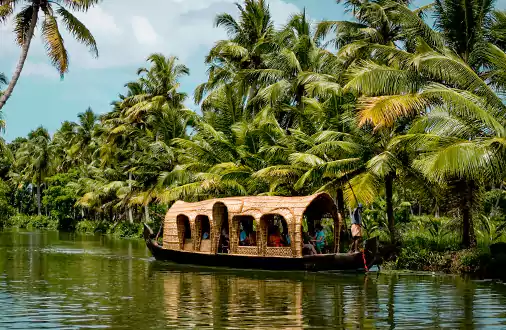
By the mid-19th Century, the sea had receded a mile, offering more land along the sand strip. Trading vessels soon began to call on Alleppey. In 1859 the first organized coir factory was started here and began producing mattings from coir yarn on a loom developed by an English sea captain. Soon other British-owned weaving establishments followed. Meanwhile, in 1816, the Church Missionary Society set up its local headquarters in Alleppey and three years later the first Anglican Church was built. In 1851 Alleppey had the honor of housing the first post office in the erstwhile Travancore State.
The commercial importance of Alleppey began to decline after the late 1920s with the development of Cochin into a major port. However, today Alleppey is still a major centre for trade in coir, copra and coconut oil. Thanks to its long coast, Alleppey is also a centre for fishing and marine products processing activities.
For tourists Alleppey is the pivotal point for trips into Kerala's famed backwaters and the state's lush rice bowl, Kuttanadu, Between Quilon to the south and Kottayam to the east lie some of the most entrancing scenery of palm-lined banks, quiet water-bound villages and little boats taking the local people to and fro-everything framed in green. Apart from the boat trips through the town's many canals and lakes, Alleppey offers glimpses of the coir manufacturing process-from the coconut husk tot the final rope/coir yarn stage. There are also several shops selling coir matting and carpets, often at prices cheaper than elsewhere. The long sandy beach at Alleppey has a lighthouse and a pier jutting out into the sea, once active in the unloading of goods from ships calling at Alleppey. Children can romp in the Vijay Beach Park.
The not-to-be-missed spectacle in Alleppey is, of course, the Nehru Trophy Boat Race which began in 1952 on the occasion of the visit of India's first prime minister, Jawaharlal Nehru, to Alleppey, It is now a major event held on the second Saturday of every August and features the gigantic snake-boats of Kerala, the chundans, once the battleships of the Malayalee kings of yore. Today the Boat Race has grown into Alleppey's single most important tourist event, with each boat being sponsored by a different village. Competition is severe as the boats, with over 100 rowers in each, race to the finish to the accompaniment of rousing music.
Place to visit in Alleppey
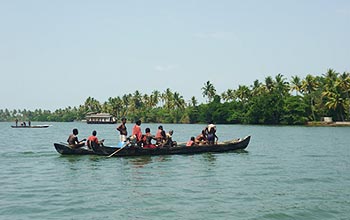
By the mid-19th Century, the sea had receded a mile, offering more land along the sand strip. Trading vessels soon began to call on Alleppey. In 1859 the first organized coir factory was started here and began producing mattings from coir yarn on a loom developed by an English sea captain. Soon other British-owned weaving establishments followed. Meanwhile, in 1816, the Church Missionary Society set up its local headquarters in Alleppey and three years later the first Anglican Church was built. In 1851 Alleppey had the honor of housing the first post office in the erstwhile Travancore State.
By the mid-19th Century, the sea had receded a mile, offering more land along the sand strip. Trading vessels soon began to call on Alleppey. In 1859 the first organized coir factory was started here and began producing mattings from coir yarn on a loom developed by an English sea captain. Soon other British-owned weaving establishments followed. Meanwhile, in 1816, the Church Missionary Society set up its local headquarters in Alleppey and three years later the first Anglican Church was built. In 1851 Alleppey had the honor of housing the first post office in the erstwhile Travancore State.
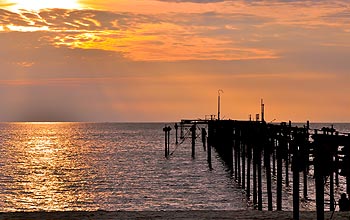
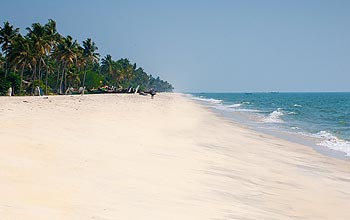
Turquoise water, golden sand, and palm trees at the backdrop make Marari an ideal retreat for a beach vacation. A serene and beautiful Marari Beach is located at the close proximity to Alleppey in Kerala. It's an ideal place for someone who wants to explore the backwaters of Kerala and relax amidst peaceful environment. Nestled in the picturesque fishing village of Mararikulam, Marari beach is verged by unlimited lines of coconut palms. You can try deep-sea fishing, surfing, parasailing, and water-skiing at the beach.
Kuttanadu is a region covering the Alappuzha, Kottayam and Pathanamthitta Districts, well known for its vast paddy fields and geographical peculiarities. The region has the lowest altitude in India, and is one of the few places in the world where farming is carried on around 4 to 10 ft below sea level. Kuttanad is the 'rice bowl of Kerala', being home to lush green rice fields spread extensively, divided by dykes. Travelling through this secluded alcove of nature will give you a feel of traditional countryside life of Kerala. In these lowlands, Kerala produces large portions of the everyday meal on reclaimed lands, split up by many small and big rivers and creeks.
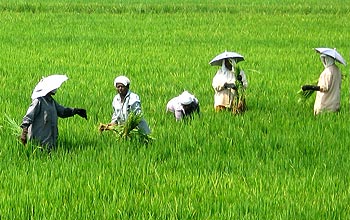
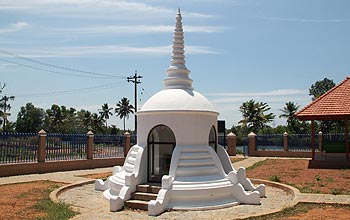
Karumadi is a small village which is famous for a 3 ft. tall, half broken statue of Lord Buddha; the left-hand side of the statue is missing. This black granite statue that is believed to be dating back to the 11th century was abandoned in a nearby stream and recovered by a British official named Sir Robert Bristow in 1930s. It is said that the statue has healing powers and anybody who touches the feet of the statue gets rid of their illness. Currently the statue is under the protection of Kerala state government.
The Krishnapuram Palace is a palace and museum that is located in Kayamkulam, at a distance of 47 km from Alappuzha. This magnificent palace was built during the reign of a Travancore King, Anizham Thirunal Marthanda Varma and is well known for its mural paintings and architecture. The palace is built in the traditional architectural style of Kerala, with a gabled roof, narrow corridors and dormer windows, and is close to the Krishnaswamy Temple at Krishnapuram.A major attraction of this place is that it houses is one of the biggest mural paintings that can be found in all of Kerala.
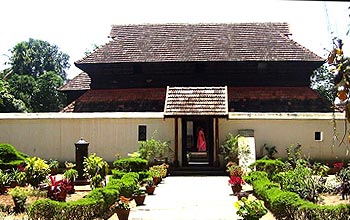
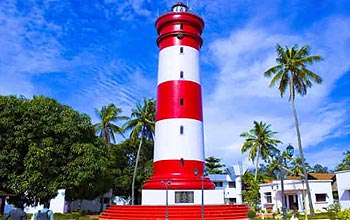
Located near the Sea Bridge and at the distance of 3 km from the Alappuzha town. One of the oldest such structures of Kerala, Alleppey Lighthouse was also the marker of busiest ports and trade centres in the state. The lighthouse was constructed during the reign of Marthanda Varma II, and the tower was installed in 1862. The lighthouse offers a 360-degree view of the Arabian Ocean, and one can easily spend hours enjoying the infinity feeling.
Ambalapuzha Sree Krishna Temple is a Hindu temple dedicated to Lord Krishna situated in Alappuzha district. Built-in the traditional Kerala style architectural pattern, the temple is famous for its delicious rice pudding prepared in sweet milk, popularly known as Pal Payasam. Also called as the ‘Dwarka of the South’, the temple is believed to have been built between 15th - 17th AD by the local king Chembakkassery Pooradam Thirunal Devanarayanan Thampuran. The famous Ambalapuzha Nadakashala Sadya, a ritualistic feast served on the Pallivetta day is another attraction of the annual festival of here.
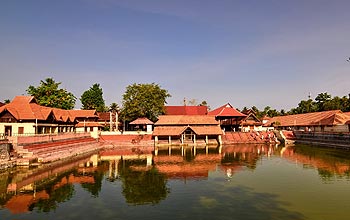
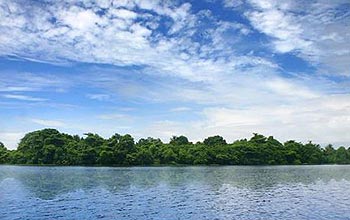
A very small island on the backwaters of Alappuzha. Pathiramanal is a haven for hundreds of rare birds migrating from different part of the world. Lies between Thanneermukkom and Kumarakom, it's a beautiful island in Kerala surrounded by the Vembanad Lake. Pathiramanal is a beautiful island in Alappuzha which was once the property of the Thaimattatil family until 1979. The island is covered with dense natural vegetation and offers a perfect climatic condition for regional flora and fauna to thrive. The attraction is also famous as a bird watcher's paradise and a favourite amongst nature lovers.
St. Andrew’s Basilica at Arthunkal in the district of Alappuzha, is considered to be the largest shrine of Saint Sebastian in all of the world. Originally constructed by the Portuguese missionaries in the 16th century, the church was rebuilt in 1584 under the priest Jacomo Fenicio who was believed to possess powers to heal body and mind, and was popularly known as ‘Arthunkal Veluthachan’. Eight years after the vicar died, the shrine was renovated to face the West towards the silken white sands of the Arabian Sea. The saint was executed by the Roman emperor Diocletian for embracing Christianity. The statue has its body pierced with arrows and has marks of blood all over, depicting the brutal execution. The interiors have been tastefully done with woodwork, and the church boasts of marvellous ancient architecture.
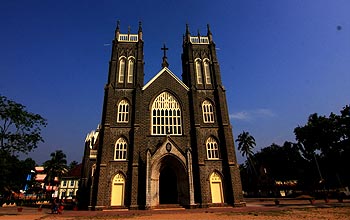
Air –The nearest airport to Alleppey is the Cochin International Airport, which is located at a distance of 75 km. The major cities of India and abroad are connected to Alleppey through this airport.
Train – Alleppey railway station is one of the biggest railway stations in India. It is the nearest railhead that connects with major cities like Cochin, Trivandrum and many more.
Road – Alleppey is connected by road via Bangalore, Chennai and Cochin. Regular buses run between these destinations on a regular basis.